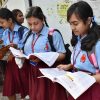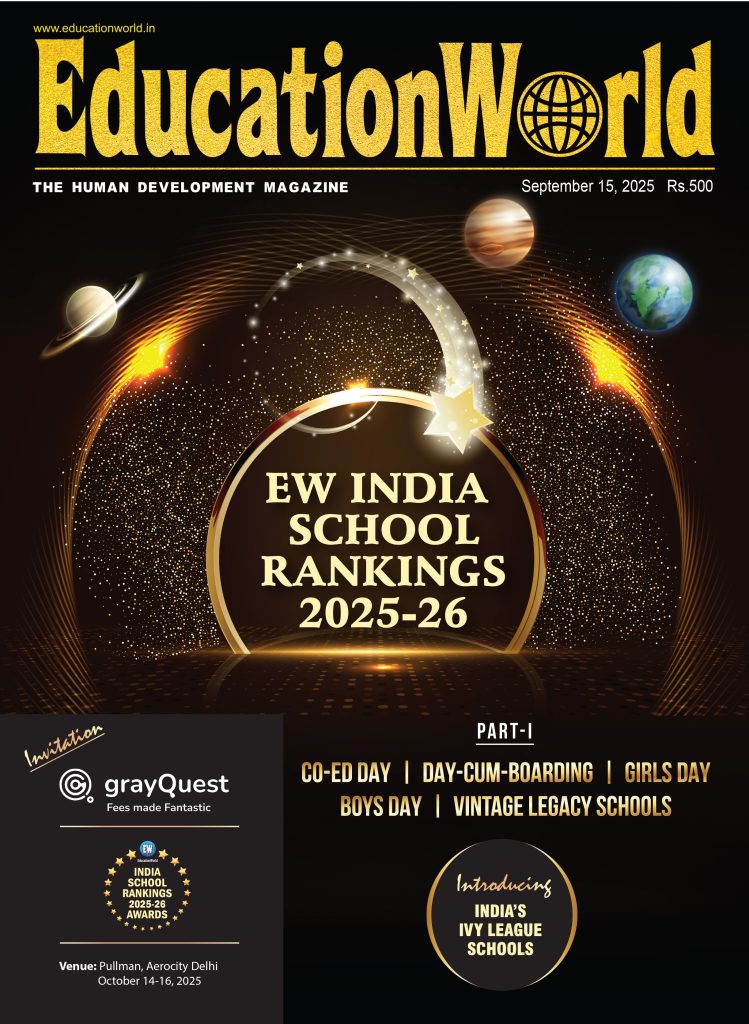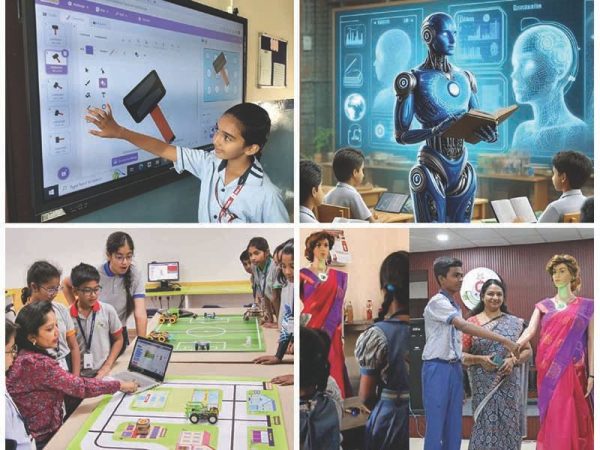NEP 2020: Implementation challenges
– Rajesh Panda, founder, Corporate Gurukul
A well-defined and futuristic education policy is a must for every country because education is the key driver of economic and social progress. Taking into account their respective traditions and culture, different countries have adopted varied education systems.
Recently, the Government of India took a giant leap forward by announcing its new education policy, the National Education Policy 2020 (NEP 2020), almost three decades after the last major revision was made to the policy in 1986.
The policy has come at the right time and the objective is very noble. But there lies a world of difference between laying down a policy on paper and following it in spirit. The success of NEP 2020 and the pace of its implementation depends to a large extent on how successfully the government, universities and schools can tide over the practical challenges facing it.
Highlights of NEP 2020
The new education policy is a positive re-imagination of India’s existing education regime. It has some very impressive and appreciable propositions. The policy envisions a model of holistic learning that is integrated, engaging and immersive. Scientific temper and evidence-based thinking will be inculcated alongside aesthetics and art.
The main tenets of this policy are:
- Flexibility, so that learners can choose their learning trajectories;
- Equal promotion of arts, sciences, physical education and other extra-curricular activities so that learners can pick whatever piques their interests;
- Multi-disciplinary approach (across the sciences, social sciences, arts, humanities and sports); emphasis on conceptual learning rather than rote learning; creativity and critical thinking;
- Cultivating life skills like cooperation, teamwork, empathy, resilience;
- Regular formative assessment for learning rather than the existing summative assessment.
It encourages peer-tutoring as a voluntary and joyful activity for fellow students under the supervision of trained teachers. NEP seeks to facilitate multiple pathways to learning that will involve formal and non-formal education modes. Formal classroom learning is limited to books and instruction. The new policy aims to take this learning outside of the four walls of a classroom and encourage students to imbibe from the real-world. This is where the concept of ‘learning how to learn’ comes in, another prominent feature of NEP. Abandoning the redundant culture of bookish learning, there will now be a move to real, holistic learning that equips individuals with 21st century skills.
From the foundational stages, young students will be exposed to multiple languages as multilingualism has great cognitive benefits and in the early years of life children tend to pick up languages very quickly. Keeping in view the importance of rich, classical languages and literature of India, Sanskrit will be offered at all levels of school and higher education as an essential, enriching option for students. While languages like Tamil, Telugu, Kannada, Malayalam and Odia will be possibly offered as online modules for those who are interested in studying them.
The policy seeks to introduce revolutionary structural reforms at the higher educational level. It promotes a flexible three or four year degree programme structure at the undergraduate level, allowing multiple exit points for the learners.
There will also be a concerted effort to promote contemporary subjects such as Artificial Intelligence, Design Thinking, Data Analytics, Machine Learning, and Holistic Health which are touted as the career choices of tomorrow. The University Grants Commission is anticipated to be replaced by Higher Education Commission of India as the regulatory body for college education.
As opposed to the current teacher-centric model, in which teachers decide the subjects, curriculum, and evaluation, a student-centric model will be developed that will give students the right to decide the subjects they want to study. To make higher education more progressive, exposure to art and design thinking is essential to improve students’ creativity in problem-solving along with science, engineering and mathematics. The new model under NEP, called STEAM, will be an upgrade over the current STEM model in higher education at a bachelor degree level, as it is focused on experiential, application-based learning and research-based internship. As part of a holistic, all-encompassing education, students will be given internship opportunities with local industry, businesses and local communities as well as research internships to improve their employability.
Impediments to implementation in schools
Changing the mindset
The current education system is a hangover of the British and Industrial age. The change in mindset will involve two or more generation of parents, teachers, grandparents and educators. A STEM education focused generation has to give way to the NEP. The corporate world also will need to align this and change its recruitment and grooming policies. There will be several challenges in changing this mindset. However, it can be done with lot of soft power play by the government.
Reimagining and adopting pedagogical changes
Education must not only develop the cognitive skills in learners – both ‘foundational skills’ of literacy and numeracy and the ‘high-order’ cognitive skills like critical thinking – but also ‘social and emotional skills’ known as the soft skills like empathy, grit, perseverance, leadership and teamwork. The NEP calls for such value-based learning along with significant curriculum and pedagogical changes. These pedagogical changes are tough and need to be reimagined for successful implementation.
Re-thinking assessment
The boards that conduct school leaving examinations will have to re-think their assessment parameters for students and also identify the appropriate learning content rubric. School textbooks will have to be accordingly realigned. Formative assessment is virtually absent. How do we adapt and implement it seamlessly? As majority of K-12 learners in India are enrolled in schools with annual tuition fee below Rs 12,000; the proposed changes will have to be conveniently cascaded across different tiers of schools.
Training educators
Implementing such bold objectives will require training teachers, educators and official staff appropriately along with preparing a pool of excellent, motivating guides. Learning has to be an enjoyable and engaging task rather than an arduous exercise which ultimately churns out unemployable youth. The policy will have to design a learning ecosystem which takes into account the geographical and cultural diversity of our country as well as the varied learning pace of each student.
Bottom-up approach
As Indians, we are socially programmed to accept top-down approach in all areas of life. This social and educational transformation is only possible with a bottom-up grass-root level intervention. In the grand scheme of things, an important action would be to repair and revamp the system through a bottom-up approach and bring a definitive change in the mindset of the stakeholders, including the office staff and parents, right at the outset. A transformation is needed from ‘what to think’ to ‘how to think’.
Raising the bar for teachers
We need to hire the very best and brightest to enter the teaching profession at all levels. Also, teachers need to be reinstated as the most respected and essential members of our society, as they are the ones who truly shape our next generation of citizens. Work also needs to be done in removing personal and professional barriers of working in remote, inaccessible locations which is crucial for preparing this workforce and also for making the NEP successful.
Funding and scaling the new model
Over 250 million students are expected to enrol in schools in India by 2030. With a teacher-student ratio of 1:35, India needs an estimated 7 million plus teachers to address this huge student population. Those teachers need to have graduated in an esteemed B.Ed. programme for a 12th pass, graduates and post-graduates for one, two and four-year respectively. Teaching also happens to be one of the lowest-paid professions in India with an average teacher earning around Rs. 200,000 per year. Due to these constraints, conceptual and experiential teaching will be tough as compared to the prevailing printed content-oriented teaching. More fund allocation is required from the government’s end to overcome this major shortcoming. Also, the current pool of teachers has to be orientated towards the new-age teaching techniques.
Impediments to implementation in higher education
Learning or certificate/degree
Though flexibility in the higher education model through the concept of multiple exits is an important step for reducing the number of dropouts, a question still arises on the value of such certifications and diplomas. The Indian psyche closely associates jobs with the degrees acquired. Hence, to implement the new system, we first have to dismantle the archaic thinking that only with a degree can one successfully secure a job. This is a dangerous paradigm which undermines and discourages other innate talents of an individual.
Orientation towards multi-disciplinary education
The existing education regime excludes formal training and orientation towards pedagogy for college and university educators. This urgently calls for an overhaul of the curriculum design to make it flexible and organic for enabling foundational and higher-order thinking and skill inculcation at different levels of education. The policy seeks to establish multi-disciplinary institutions for higher education replacing the single-disciplinary ones. The road to attain this goal has been paved with good intentions.
Funding
It will be a feat to fully implement the proposals of NEP 2020 for higher education given the limited resources at hand. It requires private institutions to offer more scholarships to make admissions possible for students from low-income strata as well, but NEP fails to discuss how this can be achieved. This indicates a need for greater public funding in higher education, which in reality does not sit well within the current scenario. The increase in education budget from 3 percent to 6 percent of GDP is simply not enough to meet the implementation needs.
Digital connectivity
We require internet penetration in remote areas because e-learning is the way forward, as witnessed during the pandemic. Digital infrastructure for this purpose will include digital classrooms, expertise-driven online teaching models, AR/VR technologies to overcome gaps in physical teaching and lab infrastructure, uniform assessment schemes across schools, career counselling sessions and teacher training to become adept at new-age technologies. This will continue to be a major challenge in the next decade.
Summing it up
The drafting committee of NEP 2020 has made a comprehensive attempt to design a policy that considers diverse viewpoints, global best practices in education, field experiences and stakeholders’ feedback. The mission is aspirational but the implementation roadmap will decide if this will truly foster an all-inclusive education that makes learners industry and future ready.
















Add comment